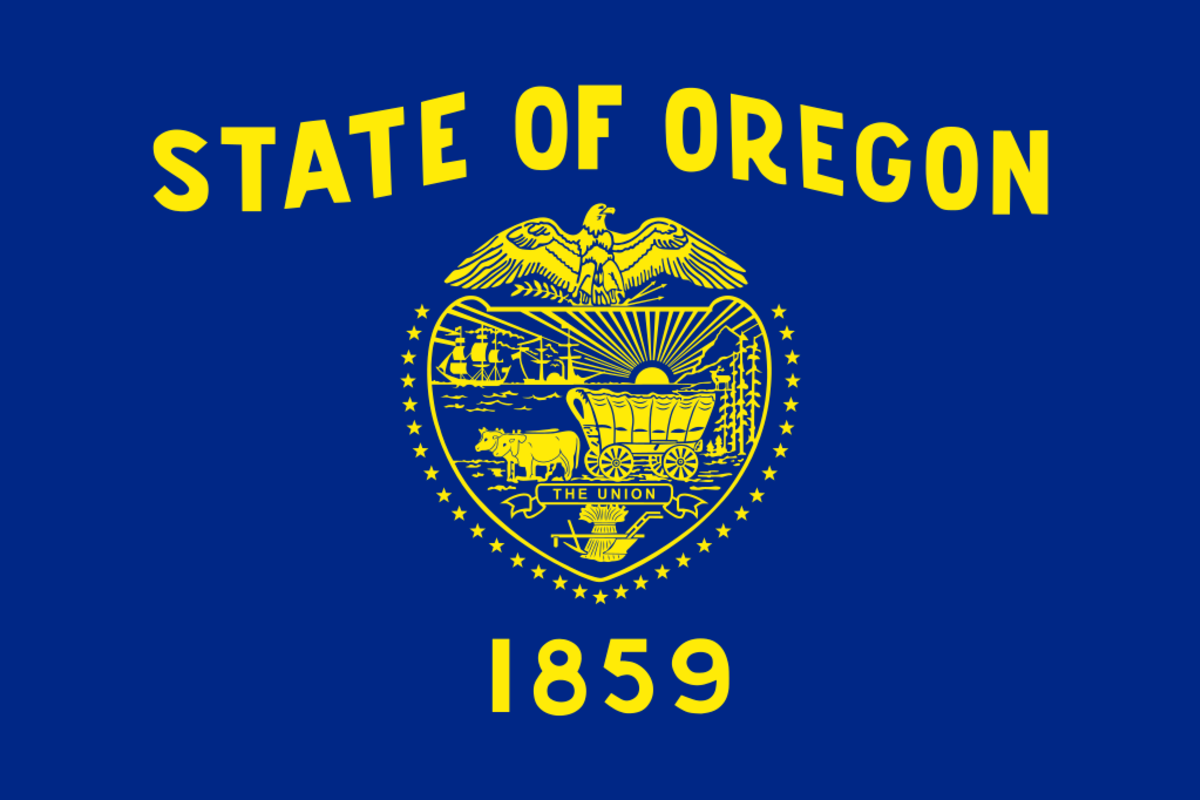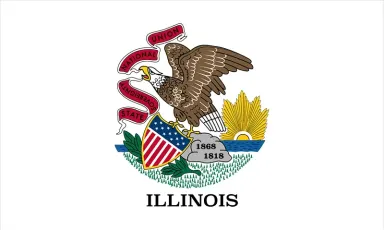Oregon Trucking Laws

In 2021, Oregon saw 1,568 motor carrier crashes and collisions, with over 1,000 involving semis and tractor-trailers. Three hundred sixty of these accidents resulted in injuries, with 471 injured. Additionally, there were 62 fatal crashes resulting in a total of 65 deaths.
A subsequent analysis of recorded data found that in most accidents where a commercial truck driver is at fault, common causes include speeding, driver fatigue, inattention, and the failure to yield the right-of-way. In accidents where other drivers are at fault, improper lane changes and alcohol intoxication are frequently cited as factors.
To reduce the likelihood of truck accidents, Oregon upholds and imposes traffic laws, including those that specifically apply to commercial vehicles. These laws include regulations on vehicle weight, speed limits, and routine maintenance. In case a commercial trucking accident occurs, the state also has various laws to help victims seeking compensation from at-fault drivers and their companies.
Oregon Trucking Weight Limits
Oregon regulates the legal weight of commercial trucks within the state to prevent roadway crashes caused by rollovers and jackknifing incidents. The state’s limits on legal operating weight vary based on a truck’s tire size and wheelbase, along with the number of axles that the vehicle has. The following are the specified legal operating weight limits within Oregon:
20,000 pounds or 600 pounds per inch of tire width for single-axle trucks
34,000 pounds for tandem-axle trucks
Between 34,000 and 60,000 pounds for tridem-axle trucks, based on the measurement of their wheelbase in feet
Between 34,000 and 80,000 pounds for four-axle trucks, based on the measurement of their wheelbase in feet
Also, the maximum weight limit for these trucks should equal the lower of the two: the tire manufacturer’s sidewall rating or 600 pounds per inch of total tire width.
Regarding legal gross weight, the maximum amount in Oregon is 80,000 pounds. Vehicles that weigh over 80,000 pounds and less than 105,000 pounds must first get an Annual Extended Weight Permit Form 1860 before they can operate within the state.
Oregon Trucking Inspection and Maintenance Regulations
To ensure that commercial vehicles are in good working condition and to prevent accidents caused by vehicular defects, the Federal Motor Carrier Safety Administration (FMCSA) requires all trucking companies in the country to organize regular inspections, repairs, and maintenance work for their respective trucks.
Under federal regulations, trucking companies are required to monitor the condition of and address any defects concerning the following:
A truck’s service, trailer, and parking brakes
Lights and reflectors
Steering mechanisms
Coupling devices
Rear-view mirrors
Tires, rims, and wheels
Windshield wipers
Horn
Companies must also ensure all emergency equipment on a truck, such as fire extinguishers and early warning devices, functions properly. Additionally, they must monitor the functionality of emergency doors, marking lights, and windows at least every 90 days.
In addition to federal requirements, all vehicles in the Portland Metro and the Medford/Ashland area must undergo an emissions test before registering or renewing a registration, as mandated by the state’s Department of Environmental Quality. These tests are carried out at designated stations, six in the Portland Metro area and one in the Medford/Ashland area.
The FMCSA also conducts roadside inspections, which monitor the roadworthiness of motor vehicles currently in operation. Commercial vehicle drivers are required to submit any resulting roadside inspection report to their employer within 24 hours. Then, within 15 days, the employer must address any report concerns or violations and retain a report copy for at least 12 months after the inspection.
Oregon Speed Limits
Oregon motorists must follow both basic and posted speed limits within the state to control traffic flow and ensure the safety of other vehicles and pedestrians. Under a basic speed limit, drivers must operate their vehicles at a “reasonable” and “prudent” speed and consider factors such as road obstacles, traffic conditions, and the weather.
Posted speed limits, also called absolute speed limits, are imposed within different areas and roadways by Oregon’s government and law enforcement personnel. The state’s posted speed limits are as follows:
15 mph in alleyways or on narrow residential roadways
20 mph in business districts and school zones
25 mph within public parks and on highways in residential districts
These highways must not be arterial highways, and the residential district must not be located within a city
55 mph on the majority of state highways
65 mph on the majority of interstate highways
A driver who exceeds any speed limit within the state will be penalized based on the amount by which they exceed a given limit. Penalties include fines ranging from $115 to over $1,000 and a license suspension lasting at least 30 days, depending on how many offenses a speeding driver has already committed.
Oregon DUI Law
Oregon law prohibits any motorist from operating a vehicle while under the influence of alcohol, drugs, and/or other types of intoxicating substances. A driver’s intoxication is measured through their blood alcohol content or BAC, which is determined using blood and breath tests.
Any driver whose BAC level reaches or exceeds .08 percent will be charged with a DUI offense. If the person in question is a commercial vehicle driver, they will be penalized if their BAC level is .04 percent or more. An offender under 21 will receive a DUI charge if they have any amount of alcohol in their system, regardless of their BAC level.
Additionally, Oregon imposes the law of implied consent, meaning that once a driver chooses to operate a vehicle, they automatically consent to take a blood or breath test to measure their BAC level. In line with this law, any driver who refuses to be tested will be penalized with a $650 fine, in addition to any other penalties they may receive.
Motorists convicted of a DUI offense may be fined between $1,000 and $2,000 for misdemeanors or as much as $125,000 if the conviction involves a class C felony charge. Depending on how many offenses they have committed, they may also spend between 48 hours and five years in jail.
Those charged with DUI while operating a commercial vehicle will have their commercial driving license suspended for one year on the first offense. This suspension becomes permanent if they commit a second DUI violation. They will also have their non-commercial driving license suspended for 1 to 3 years based on how much time has elapsed since their previous offense.
Oregon Commercial Trucking Insurance Requirements
Trucking companies in Oregon must have liability insurance coverage in accordance with both state and federal laws. Under state requirements, the minimum amount of liability coverage that companies must get follows the 25/50/20 format. This is equal to:
$25,000 for injuries per person
$50,000 for injuries per accident
$20,000 for property damage
State law also dictates that vehicles must have personal injury protection and uninsured motorist coverage. The minimum amount for PIP is $15,000 for injuries per person, while the minimum amounts for UIM coverage are $25,000 per person and $50,000 per accident. However, certain vehicles, such as husbandry implements, farm trailers, and farm tractors, are exempt from these requirements.
Additionally, any tractor-trailers, semi-trucks, and commercial vehicles bearing a serial number from the Oregon Department of Transportation are required to obtain additional liability coverage. The amount of insurance required depends on a vehicle’s type and what it is used for.
In terms of federal regulations, the FMCSA requires all commercial trucks in the country to have between $750,000 and $1,000,000 in primary liability insurance coverage. This is used alongside state-specified insurance to pay for the medical treatments and repair costs of victims if a truck driver causes an accident. A company will be penalized and may even be barred from operating if it does not have the required insurance.
The FMCSA also requires freight forwarders and motor carriers that haul household goods to have cargo insurance, with the minimum amounts being $5,000 per vehicle and $10,000 per catastrophe. Freight brokers and forwarders are also required to get at least $75,000 in trust fund agreements and surety bonds.
In addition, the FMCSA imposes regulations involving financial responsibility based on the type of commodities that a company transports. Under these guidelines, the minimum required amounts are as follows:
$300,000 for household goods
$750,000 for general cargo
$1,000,000 for oil transport
$5,000,000 for hazardous materials
Oregon Is an At-Fault State for Insurance Claims
Though Oregon requires motorists to have personal injury protection to cover their own medical expenses and part of their lost wages, regardless of fault, the state follows at-fault guidelines for insurance claims. This means those deemed responsible for an accident must shoulder victims’ losses, like injuries and property damage.
To determine who is liable in an accident, plaintiffs can use different sources of evidence to prove the fault of the other party in an insurance claim. Evidence can include police reports, eyewitness statements, and medical records.
While waiting for an insurance claim against the at-fault party to be resolved, plaintiffs can use other types of insurance to pay for part of their losses alongside their PIP coverage. These options can include collision coverage, which pays for vehicle repairs, and comprehensive insurance, which covers vehicle damage caused by non-accident factors such as vandalism, hazards, and theft.
How Much Can Someone Sue for a Truck Accident in Oregon?
In terms of how much a plaintiff can recover as compensation in a truck accident case, Oregon does not have caps on economic damages. As such, truck accident victims can receive maximized settlements to cover their present and future medical treatments, long-term rehabilitation, lost wages, and repair costs for any damaged property.
The Oregon Supreme Court declared in 2020 that the state’s previous cap of $500,000 on non-economic damages was unconstitutional. This allows plaintiffs to obtain higher damages for non-monetary losses related to pain and suffering, emotional trauma, and loss of companionship. There is no new cap that legislators have officially implemented into state law.
Plaintiffs may also recover punitive damages in Oregon if it is clearly proven that the liable party in a case acted with malice or willfully disregarded the safety of others. However, an appeal to include a claim for punitive damages can only be made during the second phase of legal proceedings, where a plaintiff must provide admissible evidence to support their appeal. The court may dismiss the appeal if such evidence is not presented or if the timing of the plaintiff’s appeal does not give the other party enough time to defend against it.
There are no fixed caps for punitive damages in Oregon, though the state’s Supreme Court has previously ruled that extremely high punitive damages awards are unconstitutional. Although the state can, by law, receive 70% of a plaintiff’s total punitive damages, the Supreme Court has previously decreed that the state is not entitled to receive any such payments.
Average Settlement for Oregon Trucking Accident Lawsuits
Based on a study conducted by Jury Verdict Research, motor vehicle accident settlements in Oregon reach an average of over $36,000. Certain cases result in higher settlements and verdicts, including a 2018 case wherein a woman who was rear-ended by a truck was awarded more than $100,000 in damages by a Multnomah County jury.
The amount of damages a truck accident victim can recover is determined by various factors, so settlements vary on a case-by-case basis. These factors can include:
The severity of the victim’s injuries
Long-term disfigurement or disability caused by injury
Lost income and/or earning capacity
Damaged property
Pain and suffering
Loss of consortium and/or enjoyment of life
Oregon Statute of Limitations for Truck Accidents
In line with Oregon’s statute of limitations on personal injury cases, truck accident victims are given up to two years to file a claim or lawsuit, starting from the date of the accident. In cases where an accident involves only damaged property, a plaintiff has a maximum of six years to recover compensation for the losses.
Additionally, Oregon follows the discovery rule if a plaintiff only discovers an injury or complication caused by an accident at a later time. In such cases, the statute of limitations only starts on the date that the plaintiff reasonably discovered the injury or complication instead of the date of the accident that caused it.
If a trucking accident results in a victim’s death, their relatives or dependents can file a wrongful death claim within three years of the victim’s passing. The discovery rule’s principle also applies to a wrongful death claim, wherein the statute only begins upon the reasonable discovery of an injury that caused the decedent’s death.
Oregon’s statute of limitations functions differently if a claim involves a minor or someone who is unable to make a claim due to a “disabling mental condition.” The statute will be extended to either a maximum of five years or one year once the minor plaintiff reaches their 18th birthday, whichever occurs first. The statute is also extended to five years or until the mentally incapable person recovers from their condition, whichever occurs first.
Oregon Is a Modified Comparative Negligence State for Trucking Accident Lawsuits
Truck accident cases in Oregon follow the principle of modified comparative negligence. This means that plaintiffs will have their potential damages awards reduced based on their share of responsibility for an accident, with the deducted amount determined by the percentage of their assigned fault. For example, a plaintiff who is 20% liable for an accident will have 20% deducted from a damages award worth $100,000, leaving them with $80,000.
Just like with insurance claims, plaintiffs can prove a defendant's fault by using police reports, medical reports, and eyewitness accounts. To prove that they have suffered losses after an accident, they can also use other types of evidence, like:
Footage from surveillance and traffic cameras
Statements from family and friends concerning pain and suffering
Psychiatric test findings and medical prescriptions for long-term trauma and despair
Documents proving the plaintiff’s loss of income or inability to find employment due to disability
Oregon’s modified comparative negligence rule also imposes a 51% fault threshold, meaning that if a plaintiff’s apportioned fault in an accident exceeds 51%, they will not be able to recover any damages whatsoever.
Lastly, Oregon law adheres to several liability rules if there are multiple defendants in an accident case. This means that a specific defendant is only obligated to pay for a plaintiff’s damages in proportion to their individually assigned fault in the accident, as determined by the court.
Legal Resources for Oregon Trucking Accident Victims
Oregon State Bar
The Oregon State Bar’s website has sections that provide assistance to state residents. The website’s Lawyer Referral Service section helps individuals look for specific lawyers within their respective metros. Potential plaintiffs can apply for the service by completing an online referral request form. Additionally, the website’s Legal Information Topics section provides website visitors with different informative articles concerning court processes, traffic laws, and other legal matters. Those who wish to obtain copies of public records can also submit requests or browse for additional information in the Public Records Center section.
Oregon Division of Financial Regulation Insurance Information
State residents can visit the Oregon government website’s section for the Division of Financial Regulation for information concerning different types of insurance coverage. The website also has a short section detailing the guidelines and steps that a motorist can follow in the wake of a motor vehicle accident. In addition, it has a summary of when to file a traffic crash and insurance report at the state’s Driver and Motor Vehicle Services Division.
Oregon Driver’s Manual
The Driver’s Manual, which is officially published and updated by the Oregon Department of Transportation, informs state motorists regarding different types of guidelines and regulations concerning vehicle speed, traffic signals, driver etiquette, and the right-of-way. The manual also has specific sections that discuss the processes involved in acquiring a driver’s license and information concerning state-specific insurance requirements, including personal injury protection and uninsured motorist coverage.
Expertise.com StaffAuthor
Step into the world of Expertise.com, your go-to hub for credible insights. We don't take accuracy lightly around here. Our squad of expert reviewers, each a maestro in their field, has given the green light to every single article you'll find. From rigorous fact-checking to meticulous evaluations of service providers, we've got it all covered. So feel free to dive in and explore. The information you'll uncover has been stamped with the seal of approval by our top-notch experts.




